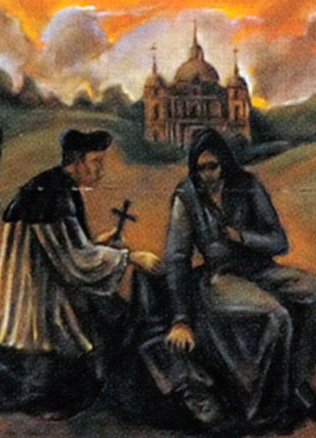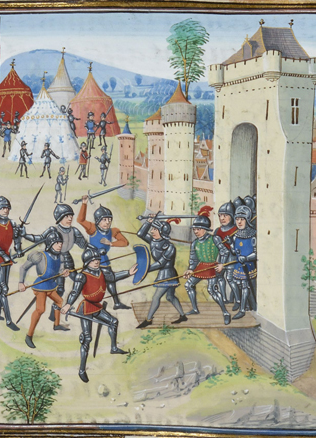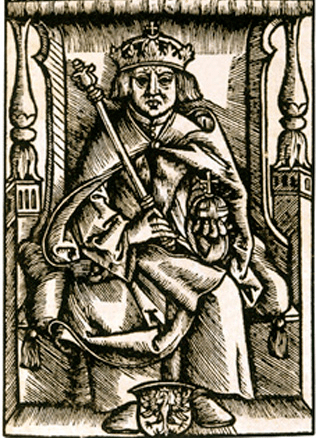Health and disease
Not many burial grounds of the 13th and 14th century have been found in Lithuania whose osteological (detailed examination of skeletal elements) matter would be suitable for anthropological research as the heathen custom of burning the dead destroyed almost everything that was to be buried. The 13th and 14th century sites where bodies were buried unburnt mainly belonged to the Christians, and, probably, the orthodox. The confessional differences, however, do not distort the data about the way of life, the health and illnesses of people.
Forty years of age is extremely old
The data derived from the investigation of the remains of the Kernavė people in the 14th century Kirveikiškės burial site indicate that the average lifespan reached 20.5 to 28.5 years (the difference can be accounted for by the small percentage of the children’s graves that have survived). There is less variance in the average lifespan of Alytus inhabitants in the 14th to 16th centuries: 22.3 for males, almost 17 for females.
In the 5th and 6th century Obeliai it was 22.6 years: half of the people would die before they reached the age of 20, the rest of them lived another 18.5 years.
According to the summarized demographic data on the Iron Age, most people who made it to their twenties, died in their thirties. The data on the lifespan of Kernavė, Alytus and Obeliai people during a thousand years are similar; however, they differ across gender groups (among females in particular). The Kernavė males’ average life expectancy was almost 21 years, while that of females was barely 18 or just over; females in Alytus lived 16.8 years; the Obeliai males lived on average 20.4 years, the female average lifespan was 15.5 years. The shorter life span of females can be associated with the mortality rates caused by pregnancy and childbirth problems. If all deliveries were successful, women of Kernavė would make it to age 30-40 and would live longer than males of the same age. Each woman in Kernavė would give birth to 4.8 to 5.6 children but only 3.26 to 3.81 of them would reach the reproductive age (15 years). Thus, a family consisted of five or six persons. High child mortality was characteristic of the society in those days e. g. in Obeliai – over 27% in the age group of 1-9-year-olds.
The “stronger” sex
In Kernavė, females slightly outnumbered males, except in the over-twenty age group (95 females for 105 males). Over time, for one fifty-year-old male there were two females of the same age. On the other hand, the data on the Iron Age indicate that older men must have outnumbered women. This is a feature of most pre-industrial societies, which sometimes does not correspond to the Kriveikiškės burial grounds data. The higher number of men can be accounted for by the fact that during the time of deprivation and famine heathens would kill female babies first. Future warriors, defenders, leaders and breadwinners, boys were cherished and fed better. However, females would better adapt to the changing stressful situations and, due to natural selection, were more resilient.
As males were more sensitive to environmental factors, the community took better care of them.
Do You Know?
The structure of age groups in Kernavė indicates that it was a community of young people: 45% children and teenagers up to age 14, another 31% juveniles and young adults (15-29 years old) and 21.3% mature people. Only 2% would make to age 50 while sixty-year-olds and over were a rare exception.
“Shrunken” Lithuanians
Population mortality is the main cause of demographic loss. About a third would die in their babyhood and childhood, barely half would top age 20, childbirth thinned out the number of women. Anthropological investigations show that beginning with the 12th century Lithuanians started losing height and in the 14th to 18th centuries they “went down” by 5 cm. This was a physical response of the people to the changing environmental conditions: with the shortage of food, smaller individuals had a better chance to survive. The Little Ice Age cooled and shortened the growing season and made the food shortage even worse. It further reduced productivity, which had never been very high. Food lacked animal proteins and trace elements necessary for the bones, something that people in the first millennium would get when game and livestock made a big part of their diet.
Anthropologists note that agriculture, the basis of economy, and a less active way of life associated with it led to eating more vegetable food, which was poorer in nutrition and caused height loss.
Poor personal hygiene, sanitation and health care reduced resistance to disease and epidemics.
Hunger brings ill health to the poor while obesity does it to the wealthy
Infectious diseases were the leading cause of mortality, striking men more often. Tuberculosis (bone tuberculosis) had been confirmed in Lithuania since the middle of the first millennium. Between the 14th and the 18th century, about a quarter of Alytus inhabitants suffered from it. Intestinal infections, chronic including), intestinal parasites, e.g. tapeworm were quite frequent. Children suffered from anaemia: 38.5 per cent in Kernavė and more than half of them in Obeliai. It was also frequently found among adult population in Kernavė (13.5% among males and 24.1% among females). Anaemia could have been caused by lengthy breast-feeding, digestive disorders, frequent diarrhoea, shortage of meat (the source of proteins, iron and trace elements), intestinal parasites. People were also ill with diabetes caused by obesity, they suffered from joint and spine diseases (osteochondrosis), arthritis, meningitis. Frequent stress did not always leave osteological traces; chronic inflammations, however, would affect the bones. Only resilient individuals could overcome chronic diseases. Anthropological investigations identified diseases related to a higher social status. The osteological data on Plinkaigalis and Marvelė in the first millennium show spine and pelvic pathology – ligament ossification, and liability to diabetes, which is associated with fat and high-calorie food, obesity and low mobility.
Literature: Lietuvos istorija, t. 3. XIII a. – 1385 m. Valstybės iškilimas tarp Rytų ir Vakarų. D. Baronas, A. Dubonis, R. Petrauskas. Vilnius, 2011.
Artūras Dubonis



